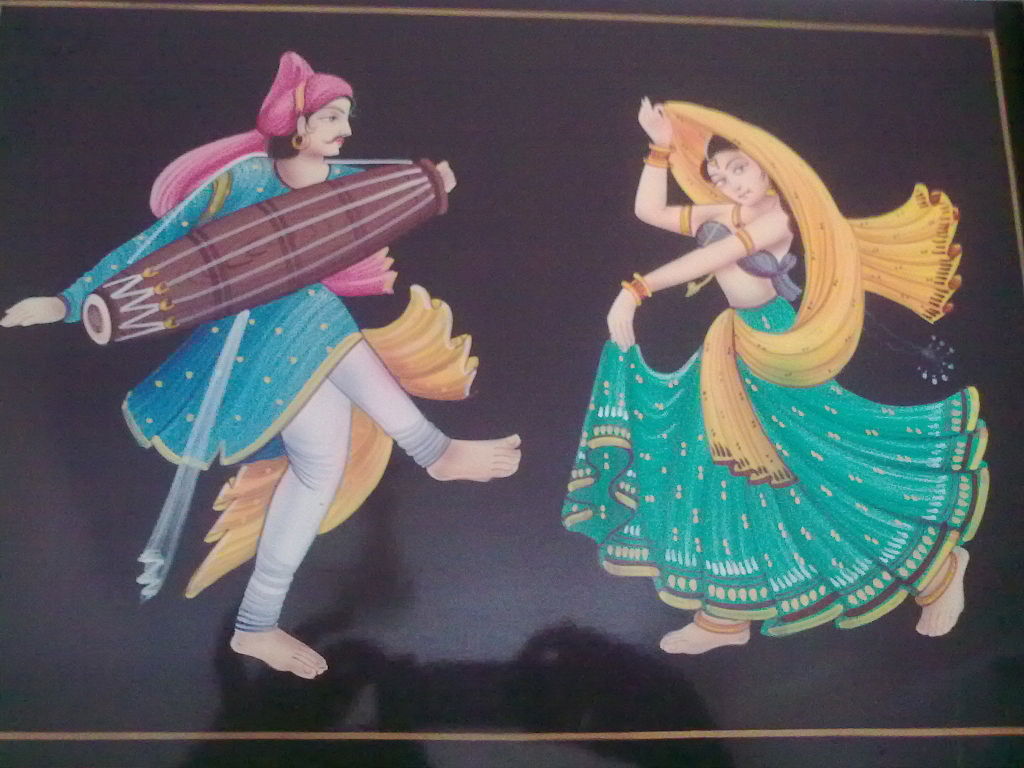The intriguing and exquisite art form, Nirmal painting originates from the town of Nirmal, Telangana. Named after its home, this painting style carries unique attributes that appeal to the admirer. Nirmal painting has been practiced for more than 400 years by the artisan community known as “Naqash”. The real beauty of Nirmal painting lies in its pristine traditional methods and partnership with nature.

The Roots of Nirmal Paintings
The story of Nirmal painting spurs from the reign of the Kakatiya dynasty. Back then Nirmal painting was used to adorn the wooden furniture. With the touch of gold and the natural feel, Nirmal painting continued to win the hearts of rulers. The elegance of Nirmal painting earned the patronage of Mughals as well as the Nizam of Hyderabad. The reason behind its success and charm was the devoted naqash. Nirmal painting process demands intricacy and expertise. And the naqash were the experts in detailing.
The community of naqash still breathes and they have devoted their lives to this splendid art form in order to preserve the prosperous Indian heritage. Nirmal painting is a subtle art that employs nature to enhance its beauty. Over these years of development, Nirmal painting has been influenced by many Indian art schools such as Ajanta and Mughal miniature. Traditionally Nirmal paintings were used to depict the excellence of the Hindu epics Ramayana and Mahabharat. But with the change in times, it adopted numerous themes.
The colours and Form
The secret ingredient that makes Nirmal painting an astonishing art form is the natural colour. The flair of Nirmal painting is the result of the vibrant natural bliss. To preserve the authenticity of Nirmal painting, the artists extract colours from gum, dye, herbs, vegetables and minerals. The partnership of nature does not end here. Along with the colour, the canvass is also the primary product gifted by nature. Earlier the paint boards were made of the wonderous white wood of the Paniki trees but with evolution, the artists have started to paint on the soft textured Indian tweak wood.
Though with the change in the world, Nirmal painting process has witnessed a few changes, it still remains the same chaste art form that appreciates nature for its colourful gifts. The creation of a Nirmal painting requires your concentration and creativity. But the glance at the startling piece of excellence will yield you the best returns for your hard work. The Naqash community employs pristine traditional methods to paint this beauty.
Luppam Finish
Since the decoration of the stage enhances the performance, before starting to paint the frames are carved. After smoothening the frames, they are dressed up with Luppam paint to increase their lifespan. The rectangular wooden painting board is also coated with the Luppam and then attached to the marvellous frame. The beginning stage of the painting includes the lacquering of the paint board. Then the design is either traced or drawn in chalk. Now the climax is the most exhilarating segment. The artist plays with the natural colours to add life to the painting.
Conclusion
Along with the vibrant and lively colours, a touch of gold is always noticed in Nirmal paintings. Nirmal painting is an art that spurred from decorating the furniture and transformed into an impeccable painting style. The luscious Nirmala paintings are a true heart stealer. This gorgeous pristine form of art is a gift from Nirmal village that Indian Art showcases with proud. Today, this art is practised mainly in Nirmal and Hyderabad. But the charm appeals to people all over the world.
One’s interest in paintings and art is never limited. Learn about the Costliest Paintings in India. You can also learn about The Art Form of Warli Painting.
